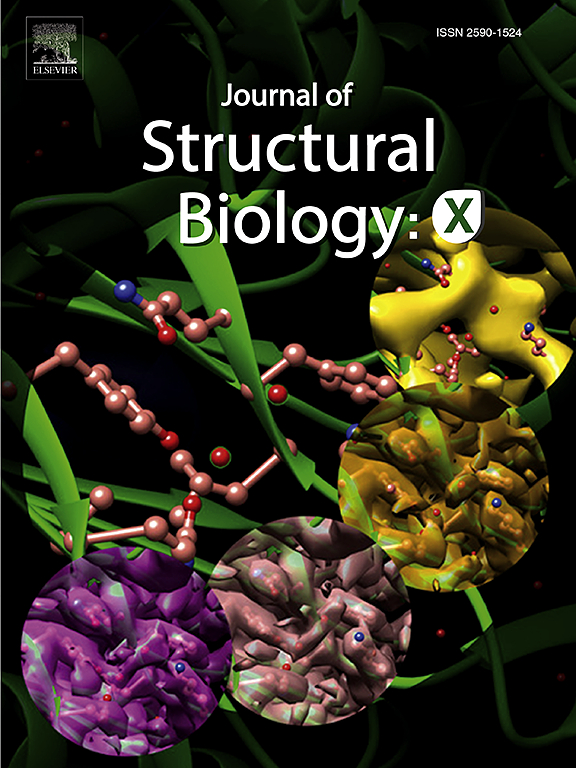酵母核仁染色质的多尺度可视化。
IF 2.7
3区 生物学
Q3 BIOCHEMISTRY & MOLECULAR BIOLOGY
引用次数: 0
摘要
染色体的空间组织对基因组的稳定性、转录和适当的有丝分裂分离至关重要。通过使用随机照明显微镜和单分子定位显微镜(SMLM)等一系列成像技术,我们对出芽酵母的染色质组织进行了深入的探索,光学分辨率从250 nm到50 nm。基于被动移动的聚合物链和核标记的局部拴系的硅模型解释了酵母染色质的许多实验数据。我们将这些模型与我们新的核质和核仁染色质成像数据进行了比较。在核质中观察到的染色质纤维与模型预测有一定的相似性,分辨率为150 nm。然而,我们在核质和核仁中都看到了染色质的局部聚集,而不是聚合物链模型预测的管状外观。在核仁中,核糖体DNA (rDNA)染色质的局部聚类在150 nm至50 nm的分辨率范围内一致观察到。我们还观察到,活跃转录的rDNA在空间上与大块核仁染色质分离。利用相关光学和电子显微镜(CLEM),我们发现局部rDNA聚集形成了一个特定的核仁亚结构域,在透射电子显微镜下可见,相当于酵母的后生动物纤维中心。我们得出结论,核仁染色质在酵母中形成一个独特的亚核仁区室,支持酵母核仁的三方结构组织模型。本文章由计算机程序翻译,如有差异,请以英文原文为准。
Multiscale visualization of nucleolar chromatin in yeast Saccharomyces cerevisiae
Spatial organization of chromosomes is crucial for genome stability, transcription, and proper mitotic segregation. By employing a range of imaging technologies, including random illumination microscopy and single molecule localization microscopy (SMLM), we conducted an in-depth exploration of the chromatin organization in budding yeast, with optical resolutions ranging from 250 nm to 50 nm. In silico models based on passively moving polymer chains and local tethering to nuclear landmarks explained much of the experimental data in yeast chromatin. We compared these models with our new imaging data of the nucleoplasmic and nucleolar chromatin. Chromatin fibers observed in the nucleoplasm showed some similarity with model prediction with a resolution of 150 nm. However, we visualized local clustering of chromatin in both the nucleoplasm and nucleolus, rather than the tube-like appearance predicted by polymer chain models. In the nucleolus, local clustering of ribosomal DNA (rDNA) chromatin is consistently observed from 150 nm resolution down to 50 nm. We also observed that actively transcribed rDNA spatially segregates from bulk nucleolar chromatin. Using correlative light and electron microscopy (CLEM), we found that local rDNA clustering is forming a specific nucleolar subdomain visible in transmission electron microscopy, the yeast equivalent of metazoan fibrillar center. We conclude that nucleolar chromatin forms a distinct sub-nucleolar compartment in yeast, supporting the model of a tripartite structural organization of the yeast nucleolus.
求助全文
通过发布文献求助,成功后即可免费获取论文全文。
去求助
来源期刊

Journal of structural biology
生物-生化与分子生物学
CiteScore
6.30
自引率
3.30%
发文量
88
审稿时长
65 days
期刊介绍:
Journal of Structural Biology (JSB) has an open access mirror journal, the Journal of Structural Biology: X (JSBX), sharing the same aims and scope, editorial team, submission system and rigorous peer review. Since both journals share the same editorial system, you may submit your manuscript via either journal homepage. You will be prompted during submission (and revision) to choose in which to publish your article. The editors and reviewers are not aware of the choice you made until the article has been published online. JSB and JSBX publish papers dealing with the structural analysis of living material at every level of organization by all methods that lead to an understanding of biological function in terms of molecular and supermolecular structure.
Techniques covered include:
• Light microscopy including confocal microscopy
• All types of electron microscopy
• X-ray diffraction
• Nuclear magnetic resonance
• Scanning force microscopy, scanning probe microscopy, and tunneling microscopy
• Digital image processing
• Computational insights into structure
 求助内容:
求助内容: 应助结果提醒方式:
应助结果提醒方式:


